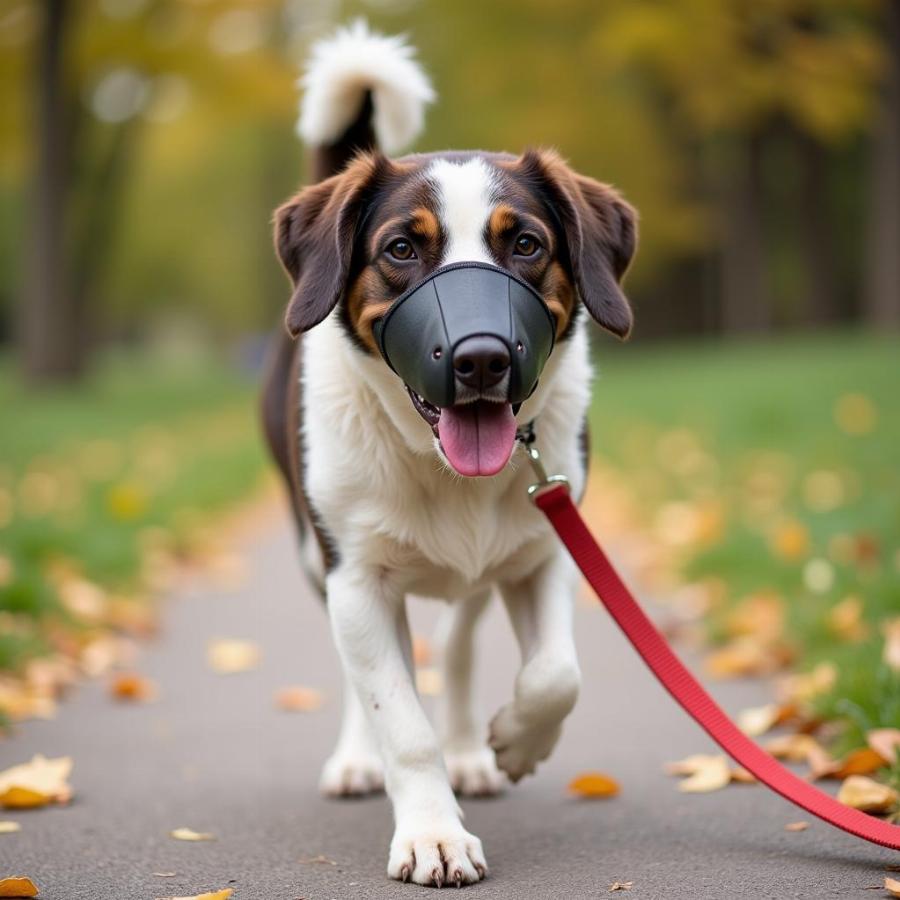Dog vomiting and bloody stool are alarming symptoms that should never be ignored. While an occasional upset stomach might be nothing to worry about, the combination of these two signs can indicate a serious underlying health issue. Understanding the potential causes and knowing how to react quickly can make all the difference in your furry friend’s well-being.
Recognizing the Severity of Dog Vomiting and Bloody Stool
When your dog vomits and has blood in their stool (hematochezia), it’s crucial to assess the situation carefully. The color and consistency of the vomit and stool can provide valuable clues. Is the vomit clear, yellow, or contains food? Is the blood in the stool bright red, dark red, or black and tarry (melena)? The frequency and duration of these symptoms are also important factors. A single episode might be less concerning than repeated occurrences. If your dog is also exhibiting lethargy, loss of appetite, abdominal pain, or other unusual behaviors, it’s a clear sign that immediate veterinary attention is needed.
Possible Causes of Vomiting and Bloody Stool in Dogs
Several factors can cause a dog to vomit and have bloody stool. Some common culprits include dietary indiscretion (eating something they shouldn’t), infections (bacterial, viral, or parasitic), inflammatory bowel disease (IBD), allergies, pancreatitis, and even certain types of cancer. Parasites, such as whipworms, can irritate the intestinal lining, leading to both vomiting and bloody diarrhea. Similarly, bacterial infections can cause inflammation and bleeding in the digestive tract.
What to Do if Your Dog is Vomiting and Has Bloody Stool
If you observe these symptoms in your dog, the first step is to contact your veterinarian immediately. Describe the symptoms in detail, including the color and consistency of the vomit and stool, the frequency of the episodes, and any other accompanying signs. Your veterinarian may advise you to bring your dog in for a physical examination and diagnostic tests. These tests may include blood work, fecal analysis, X-rays, or ultrasound to determine the underlying cause.
Home Care for Dogs with Mild Symptoms
In some cases, if the symptoms are mild and your veterinarian advises, you can provide some supportive care at home while monitoring the situation closely. Ensure your dog has access to fresh water to prevent dehydration. You might consider withholding food for a short period to allow the digestive system to rest. However, always follow your veterinarian’s instructions regarding feeding. Never administer human medications to your dog without veterinary approval, as some can be toxic.
Preventing Vomiting and Bloody Stool in Dogs
While not all causes are preventable, you can take steps to minimize the risk. Feed your dog a high-quality, balanced diet and avoid sudden changes in their food. Keep potentially harmful substances, like medications, cleaning products, and toxic plants, out of their reach. Regularly deworm your dog and maintain their vaccinations to protect them from parasites and infectious diseases. If your dog is prone to dietary indiscretion, consider using a muzzle during walks to prevent them from scavenging.
 Dog with Muzzle on a Walk
Dog with Muzzle on a Walk
Conclusion
Dog vomiting and bloody stool is a serious issue that demands prompt attention. Early diagnosis and treatment are crucial for a positive outcome. While some causes are relatively minor, others can be life-threatening if left untreated. By being vigilant, understanding the potential causes, and working closely with your veterinarian, you can help ensure your furry companion stays healthy and happy.
Frequently Asked Questions (FAQs)
- What does bright red blood in dog stool mean? Bright red blood often indicates bleeding in the lower digestive tract, such as the colon or rectum.
- What does black, tarry stool in dogs indicate? Black, tarry stool (melena) suggests bleeding in the upper digestive tract, such as the stomach or small intestine.
- Can stress cause bloody stool in dogs? While stress can sometimes contribute to digestive upset, it’s rarely the sole cause of bloody stool.
- How can I prevent my dog from eating things they shouldn’t? Training, supervision, and using a muzzle during walks can help prevent dietary indiscretion.
- When should I take my dog to the vet for vomiting and bloody stool? Any instance of bloody stool combined with vomiting warrants a call to your veterinarian.
Further Reading
For more information on related topics, you may find these articles helpful: bone marrow for dogs, clindamycin for dogs side effects, and dogs bum leaking. You can also learn more about parasite symptoms in dogs and whip worms in dogs treatment.
About Beaut Dogs
Beaut Dogs is your trusted source for comprehensive information on all aspects of dog ownership, from breed selection to expert care advice. We provide a wealth of knowledge on various breeds, their characteristics, and their unique needs. We also cover health, nutrition, training, legal aspects, and product recommendations. When you need support, please contact us via Email at [email protected] to receive detailed and accurate answers from Beaut Dogs. Visit us at https://beautdogs.com to explore the wonderful world of dogs!